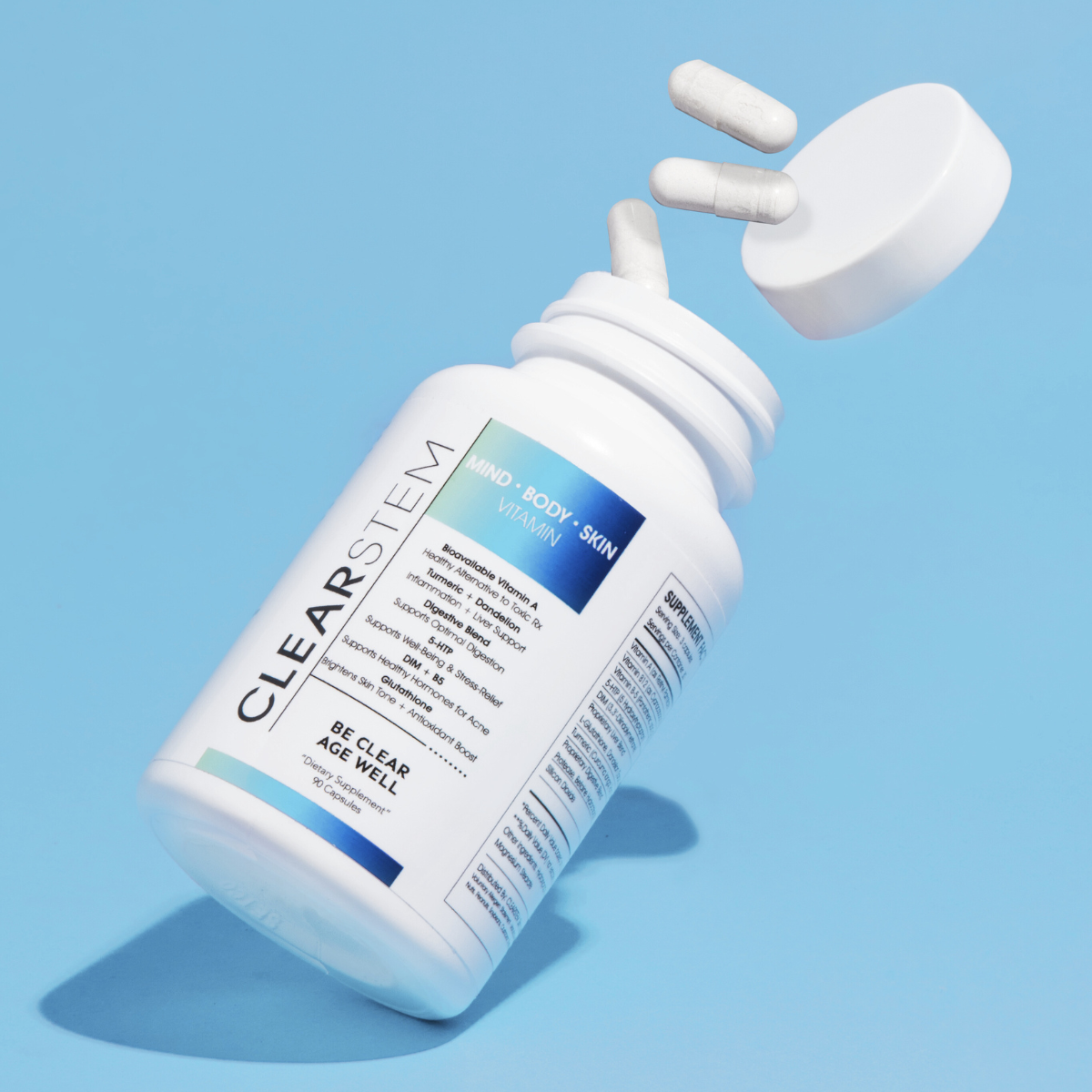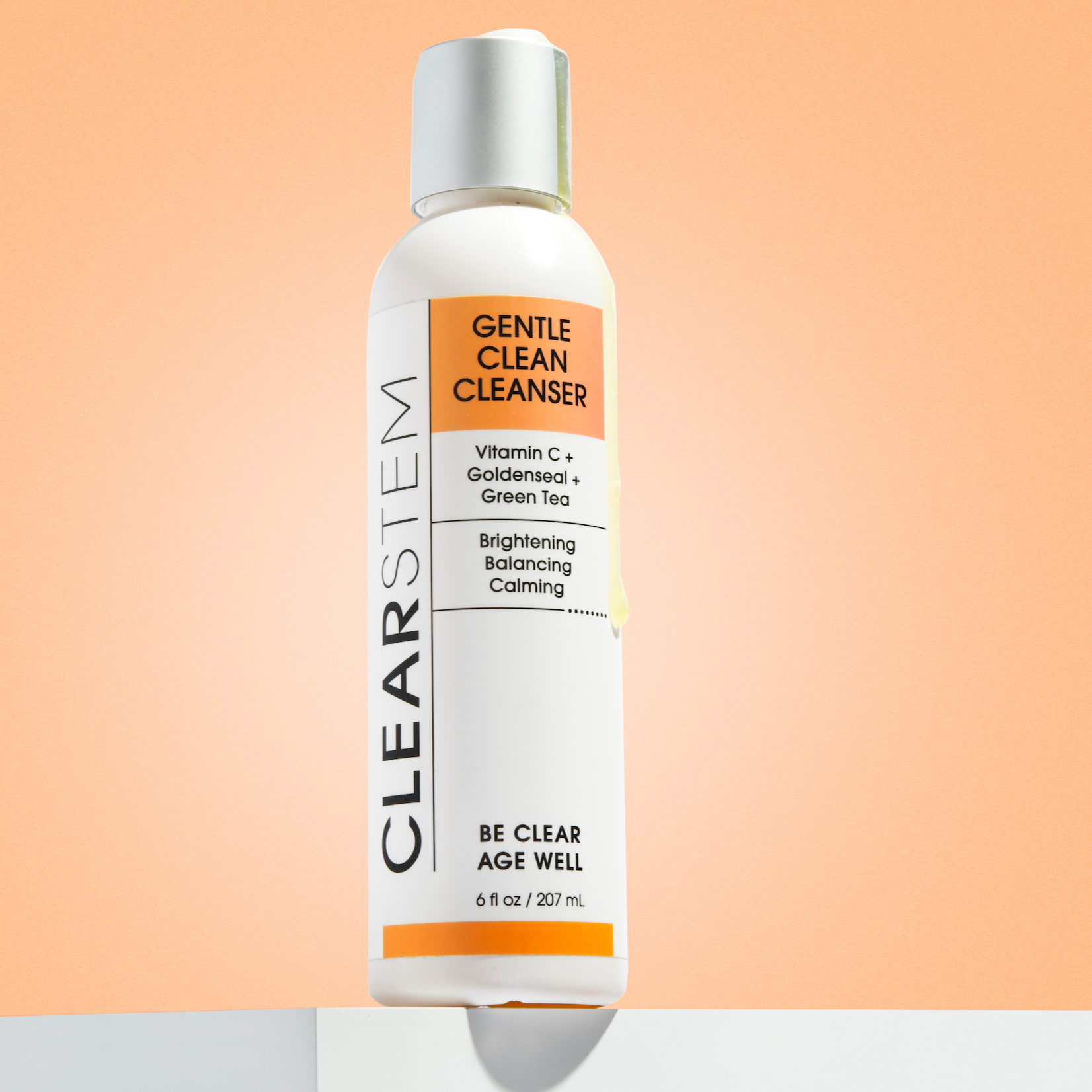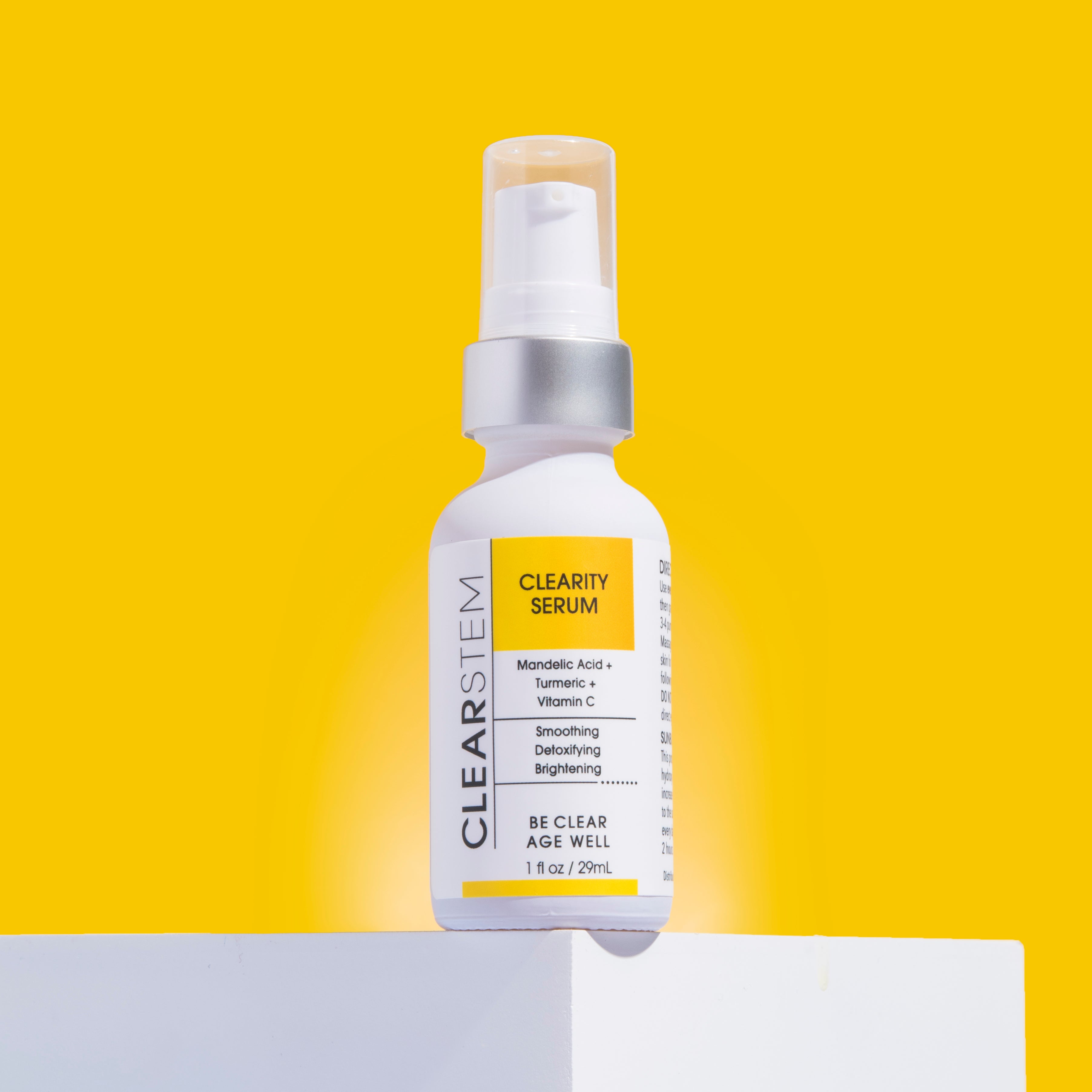Have you ever had one of those moments where your digestive system reminds you of its existence at the worst time? Maybe it’s loud gurgling in a quiet classroom or cramps and bloating when you need to power through a long afternoon. Or maybe it’s that sudden, gotta go! feeling in the middle of a meeting.
We’ve all been there. But if your digestive system regularly wreaks havoc on your plans, it’s time to find out how to heal your gut with food.
When your gut works smoothly, your whole body benefits. In fact, gut health helps with mood regulation, energy, immune function, and skin health. Luckily, you can make plenty of dietary choices to support proper gut function. Here, we’ll cover how to heal your gut through food so that you can live in harmony with your digestive system.
Balancing Your Gut Microbiome: The Power of Probiotics
To understand gut health, we need to start by looking at the gut microbiome. While it might sound strange, trillions of microorganisms like bacteria, fungi, viruses, and more essentially inhabit a bustling city hidden in your digestive tract. These invisible inhabitants make up a complex ecosystem that is crucial to your well-being.
Both beneficial and harmful microbes inhabit this ecosystem. In a healthy gut, the good bacteria outnumber the bad bacteria and keep them from multiplying out of control. However, this balance can be thrown off by many lifestyle factors and cause an unhealthy gut, such as:1
- Antibiotics
- A diet lacking in whole grains, fruits, and vegetables
- Alcohol consumption2
- Lack of physical activity
- Smoking
- Lack of sleep
- Stress
When your number of beneficial bacteria falls, your body isn’t able to extract as many nutrients from food as it should, leading to deficiencies that can impact your gut health, immune system function, and skin health.
To avoid this, let’s take a look at the best foods to heal gut microbiomes and get your gut back to its best self.
Fiber-Rich Foods
Dietary fiber is a cornerstone of gut health and is also a pillar component when following an anti-acne diet. It’s essential for moving waste through the digestive system efficiently. This, in turn, helps flush out toxins and harmful microbes that can build up and create gut inflammation. High-fiber diets also provide plenty of sustenance for beneficial gut bacteria, helping them thrive and multiply.
Fiber in our diets comes from plant foods like grains, legumes, fruits, and vegetables. There are two types of fiber in foods3:
- Soluble fiber – This is a type of fiber that dissolves in water. In the gut, soluble fiber has a gel-like consistency that helps slow foods so nutrients can be absorbed fully. Good sources of soluble fiber include citrus fruits, apples, oats, beans, barley, and carrots.
- Insoluble – This type of fiber doesn’t dissolve in water, so it stays intact as it moves through your digestive system. This helps move food through your gut quickly and efficiently, making bowel movements more regular and easy to pass. Foods that contain more insoluble fiber include whole wheat, most vegetables, nuts, seeds, brown rice, and dark leafy greens.
Anti-Inflammatory Diet
Gut inflammation is linked to a vast range of health problems that can affect all parts of your body, including your skin. However, it’s also a natural body process that helps heal and fight infections. A healthy gut microbiome is one of the body’s best tools for regulating inflammation so that it does its job without getting out of control.
You can support healthy digestion by avoiding foods that lead to excess inflammation and consuming foods that contain lots of antioxidants (natural inflammation fighters).4
Foods that contribute to inflammation include:
- Refined carbs
- Sugary foods and drinks
- Fried foods
- Red meat
- Fatty foods like margarine, butter, lard, and shortening
Gut-healthy foods that fight inflammation and support digestive health include:
- Green leafy veggies
- Fruits like tomatoes, berries, and citrus
- Fish
- Nuts
- Olive oil
Fermented Food and Gut Healing
In fermentation, foods grow colonies of good bacteria—aka, probiotics. This makes fermented foods nutritional powerhouses packed with gut-friendly bacteria, yeast, and digestive enzymes that support a healthy gut and increase microbiome diversity.5
Of course, it’s also true that fermented food has strong, distinctive flavors that aren’t everyone’s cup of tea. But with so many options, you’re likely to find some that suit your palate.
Some probiotic-packed favorites that support healthy digestion include:
- Fermented bean dishes like tempeh, natto, and miso
- Fermented vegetables like kimchi, sauerkraut, and some pickles
- Fermented dairy products like yogurt and kefir
- Kombucha, a fermented tea
Omega-3 Fatty Acids for Gut Wellness and Inflammation Reduction
You’ve probably heard of omega-3 fatty acids for heart health, but they’re also strongly linked to gut health and acne. Research is still ongoing, but so far, it appears that consumption of omega-3s can6:
- Reduce inflammation – Omega-3s can help modulate the inflammatory response by creating short-chain fatty acids, which support a healthy intestinal lining. Inflammation of the digestive tract is a significant factor in inflammatory bowel diseases.
- Increase bacterial diversity – Studies have also found that consuming omega-3s changes the balance of bacteria in the gut, leading to an increase in the diversity and a healthier balance of bacteria in the gut microbiome.
- Strengthen the intestinal walls – A robust gut barrier is crucial for preventing harmful substances from leaking into the bloodstream and preventing nutrient loss (known as “leaky gut syndrome”).
Omega-3s can support healthy gut bacteria and be added to your diet in several ways:
- Fatty fish – Salmon, mackerel, and sardines are all good sources of omega-3s.
- Plant-based sources – Flaxseeds, chia seeds, and walnuts contain high levels of alpha-linolenic acid (ALA), a type of omega-3, all of which promote healthy bacteria.
- Supplements – If you find it challenging to incorporate significant amounts of gut-healing food into your diet, supplements are also a viable choice. Try fish oil capsules or algae-derived supplements for a vegan option.
Identifying Food Sensitivities
Discovering your food sensitivities is key to healing your gut. After all, if you add healthy foods like the above but continue to damage your gut health with foods that cause a negative reaction in your system, you’ll just be taking two steps forward and one step back.
Keep in mind that food sensitivities and intolerances differ from food allergies. Allergies trigger the immune system and can cause potentially fatal anaphylactic reactions. Sensitivities or intolerances cannot cause anaphylaxis.
Think of lactose intolerance, for example. Eating dairy can cause plenty of discomfort and regret if your body doesn’t produce lactase (the enzyme that breaks down lactose). But your body isn’t allergic to dairy, so you won’t experience dangerous immune reactions like swelling of the airways or low blood pressure.
To sum up7:
- Food intolerance – Inability to properly digest some foods, causing undigested material to remain in the gut and create discomfort, bloating, cramps, and gas. Gluten, dairy, sulfites, and fructose are some of the most common food intolerances.
- Food sensitivity – Discomfort that isn’t limited to the digestive system after eating certain foods. This discomfort can include joint pain, lethargy, brain fog, and fatigue.
- Food allergies – An immune system reaction to foods or additives. Severe allergies can be life-threatening, while sensitivities and intolerances cannot.
If you suspect you may have food sensitivity, an elimination diet can help pinpoint your triggers.
Elimination Diets: Uncovering Triggers for Gut Healing
In an elimination diet, you remove certain foods from your diet for a period of time (nutritionists will often recommend 2 to 4 weeks). You’ll then slowly reintroduce these foods one at a time to see if they cause a reaction.
Here’s a basic overview of a standard elimination diet method8:
- Track your current diet - Start by keeping a food diary for a week or two. Write down your meals along with any symptoms you notice, such as stomach upset, low energy, skin troubles, or mood swings. Note any foods you suspect might be causing problems.
- Start the elimination diet - Elimination diets can be mild or strict. If you’re doing the diet on your own, start simple. Pick one food or one food group you suspect is causing issues and avoid it for at least 10 to 14 days. Track any symptoms as you experience them, and be prepared for symptoms to flare up before they improve.
- Reintroduction - If you’ve noticed improvements during your diet, it’s a good hint that the eliminated food was causing your symptoms. Try slowly reintroducing that food, starting with small amounts every 3 or 4 days. Be prepared for symptoms to return, and remember that reactions often occur a few days after the food is eaten.
- Make a long-term plan - After completing the first three steps, you can create a long-term plan. If symptoms haven’t improved much or at all, try another round of elimination. If you’ve seen an improvement, continue the diet for at least 3 to 6 months before considering reintroducing the problematic food. Some food intolerances can go away over time, so it’s worth trying again every so often.
This elimination diet method is a safe way to explore and manage potential food sensitivities on your own. If you have severe reactions to any foods that you feel may be an allergy, or if you suspect Celiac disease, it’s important to contact a medical professional for guidance. You may also want to do functional lab testing to check for any other type of imbalances if you are experiencing skin vitamin deficiency symptoms as well.
Healthy Gut, Healthy Skin With the Science of CLEARSTEM
While moisturizers, masks, and serums can nourish your skin from the outside, for the most radiant, resilient skin, you’ll need to look within. The fact is a healthy body and beautiful skin start from the gut. So, support your gut with a plate that’s brimming with all of the healthy and delicious foods we’ve discussed here, and reap the rewards of more energy, less acne, and brighter skin.
And remember to make CLEARSTEM part of your holistic journey to clear, fresh skin and a healthier you—without compromising your skincare.
CLEARSTEM is proof that you can have effective acne-busting, non-comedogenic skin care with no need for fillers, toxins, or harmful hormone disruptors. We’ll show you how to ditch your old acne- and age-fighting protocol and get real results that last.
Sources:
- Peer J: Life and Environment. Factors affecting the composition of the gut microbiota, and its modulation. https://www.ncbi.nlm.nih.gov/pmc/articles/PMC6699480/
- American Journal of Physiology: Gastrointestinal and Liver Physiology. Colonic microbiome is altered in alcoholism. https://www.ncbi.nlm.nih.gov/pmc/articles/PMC3362077/
- Mayo Clinic. Dietary fiber: Essential for a healthy diet. https://www.mayoclinic.org/healthy-lifestyle/nutrition-and-healthy-eating/in-depth/fiber/art-20043983
- Harvard Health Publishing. Foods that fight inflammation. https://www.health.harvard.edu/staying-healthy/foods-that-fight-inflammation
- Cell. Gut-microbiota-targeted diets modulate human immune status. https://www.cell.com/cell/fulltext/S0092-8674(21)00754-6
- International Journal of Molecular Sciences. Impact of omega-3 fatty acids on the gut microbiota. https://www.ncbi.nlm.nih.gov/pmc/articles/PMC5751248/
- Harvard Health Publishing. Food allergy, intolerance, or sensitivity: What’s the difference, and why does it matter. https://www.health.harvard.edu/blog/food-allergy-intolerance-or-sensitivity-whats-the-difference-and-why-does-it-matter-2020013018736
- Integrative Medicine. Adverse food reactions and the elimination diet. https://www.sciencedirect.com/topics/medicine-and-dentistry/elimination-diet










